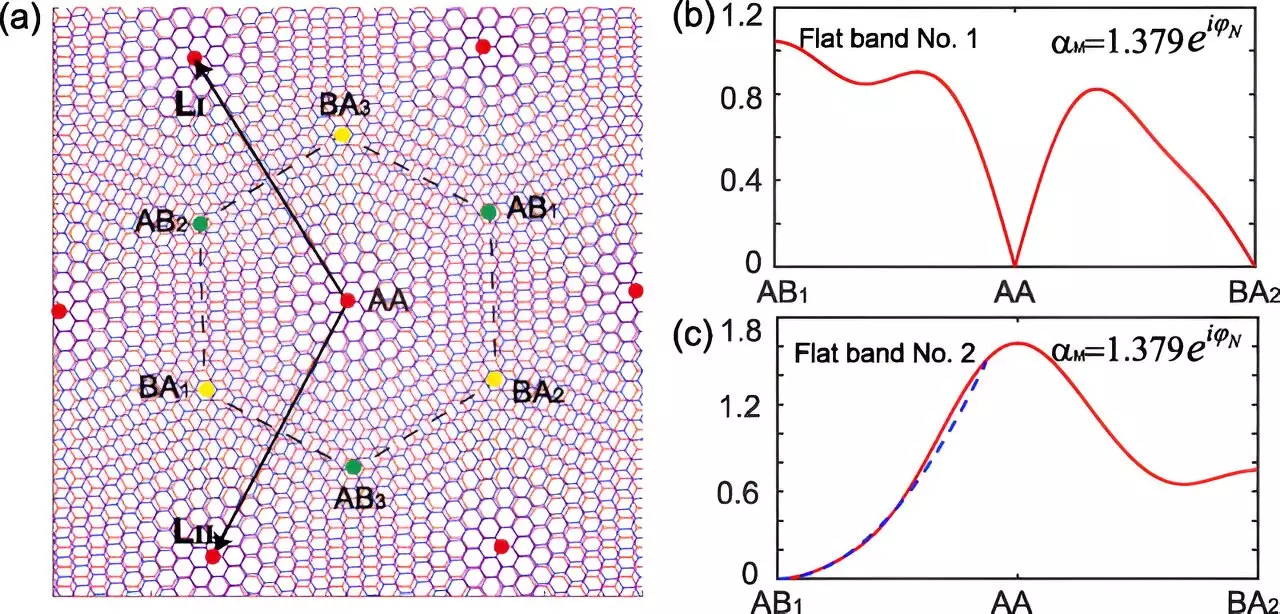The realm of physics is constantly evolving, with researchers uncovering new ways to manipulate materials to showcase exotic properties. One such example is the use of twisted graphene layers, where two or more sheets of graphene are placed on top of each other with a specific twist angle. This results in the emergence of a moiré pattern and a dramatic change in properties, such as the exhibition of correlated insulator behaviors and superconductivity.
In a recent study conducted by RIKEN physicists, Ching-Kai Chiu and Congcong Le, along with their team at the RIKEN Interdisciplinary Theoretical and Mathematical Sciences (iTHEMS), the impact of introducing a spatially varying magnetic field on twisted bilayer graphene was investigated. The study, published in Physical Review Letters, revealed that the addition of the magnetic field led to the creation of flat bands that were quadruply degenerate.
Graphene’s unique band structure, characterized by a linear relationship between an electron’s energy and momentum at specific points, undergoes significant alterations when two layers of graphene are twisted at certain angles. These twisted bilayer graphene structures give rise to flat bands, where the kinetic energy of electrons is minimized, emphasizing the interactions between electrons as the dominant force. This interaction results in a plethora of strongly correlated electronic phenomena, including unconventional superconductivity.
The discovery of quadruply degenerate flat bands in twisted bilayer graphene, induced by the introduction of a spatially alternating magnetic field, holds immense potential for unveiling new correlated phenomena. The higher degeneracy observed in these flat bands offers researchers an unprecedented opportunity to explore novel electronic behaviors that were previously unattainable. Additionally, the magnetic phase provides an added degree of freedom to manipulate the electronic band structure, opening doors to new possibilities in material design and engineering.
As the physics community continues to be intrigued by the astounding findings related to twisted graphene layers and the impact of magnetic fields on their properties, the search for other materials exhibiting similar phenomena is underway. Researchers like Chiu and Le are committed to systematically exploring new platforms that host flat bands, with the aim of uncovering even more exotic physics and advancing the realm of material science. The pursuit of manipulating materials at the atomic level to achieve desired electronic properties remains a fascinating and promising area of study.
The integration of magnetic fields in twisted graphene layers has ushered in a new era of exploration in the realm of exotic physics. The discovery of quadruply degenerate flat bands presents researchers with an exciting opportunity to delve deeper into correlated phenomena and potentially unlock groundbreaking advancements in electronic devices and material engineering. The journey towards understanding and harnessing the full potential of twisted graphene layers, coupled with magnetic fields, is undoubtedly a captivating and transformative endeavor for the physics community.


Leave a Reply